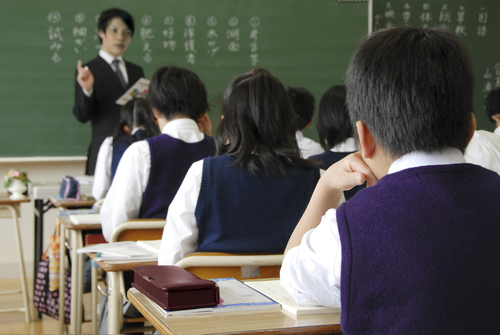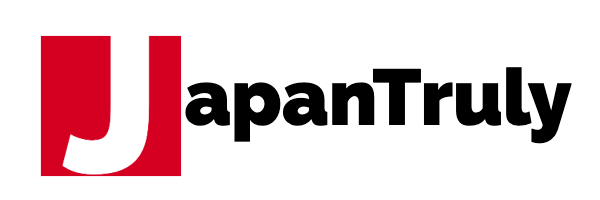Here’s a guide to Japanese School Grades By Age. Read on to find out everything about the Japanese school system.
Confused by Japan’s school system? This guide sorts it out! We break down the grade levels by age, from elementary to high school, and explain compulsory education in Japan.
Page Contents
Key Takeaways
- The Japanese education system is managed by the Ministry of Education, Culture, Sports, Science, and Technology (MEXT) and is compulsory at the elementary and lower secondary levels.
- Children start their education at age 6 and attend elementary school for six years, followed by three years of junior high school and three years of high school.
- The Japanese school year starts in April and ends in March, with a long summer break from late July to early September.

Japanese School Grades By Age
Japanese School Grades By Age
| Age Range | School Level | Grade Level | Notes |
|---|---|---|---|
| 3 – 5 years old | Kindergarten (幼稚園, Yōchien) | Optional | Not compulsory |
| 6 – 11 years old | Elementary School (小学校, Shōgakkō) | 1 – 6 | Compulsory education begins |
| 12 – 14 years old | Junior High School (中学校, Chūgakkō) | 1 – 3 | Compulsory education ends |
| 15 – 17 years old | High School (高等学校, Kōtōgakkō) | 1 – 3 | Not compulsory |
| 18+ | University (大学, Daigaku) | Varies |
Japanese School System Overview
The Japanese school system is known for its high academic standards and rigorous curriculum.
In Japan, education is compulsory for children from the age of 6 to 15, which includes six years of elementary school and three years of junior high school.

Students then have the option to attend three years of high school, followed by two or three years of junior college or four-year universities.
The Japanese school year begins in April and ends in March, with three semesters. The first semester runs from April to July, the second from September to December, and the third from January to March.
The summer vacation is six weeks long, while the winter and spring breaks are two weeks each.
The Japanese school system places a strong emphasis on discipline and respect for authority. Students are expected to follow strict rules and adhere to a hierarchical system, where older students have more authority over younger ones. This system is reinforced by the use of uniforms and a strict code of conduct.
In Japan, students are placed in classes based on their academic ability, with the highest-performing students in the top class and the lowest-performing students in the bottom class. This system is designed to encourage competition and motivate students to work harder.
Overall, the Japanese school system is highly respected for its academic rigor and emphasis on discipline. However, it has also been criticized for its lack of creativity and individuality, as well as its high levels of stress and pressure on students to perform well.
Pre-School Education in Japan
In Japan, pre-school education is not mandatory, but it is highly encouraged. Children usually attend pre-school between the ages of one and five, although some may begin earlier. Pre-school education is divided into two categories: hoikuen (nursery schools) and yochien (kindergartens).
Nursery schools are for children under the age of six, and they are usually run by local governments or private organizations.
They provide full-day care and education, including meals and snacks. The curriculum is designed to help children develop their social, emotional, and cognitive skills.
Kindergartens, on the other hand, are for children between the ages of three and six. They are usually run by private organizations, and they provide half-day education. The curriculum is focused on developing children’s social skills, creativity, and independence.
Both hoikuen and yochien have their own unique characteristics and teaching methods. Some hoikuen may focus more on play-based learning, while others may have a more structured curriculum. Similarly, some yochien may focus more on academics, while others may prioritize social and emotional development.
Overall, pre-school education in Japan is highly valued, and it is seen as an important foundation for future academic and social success. Parents are encouraged to enroll their children in pre-school programs, and the government provides financial support to make it more affordable for families.
Elementary Education in Japan
In Japan, elementary school education is compulsory for all children. It begins at the age of 6 and lasts for six years, from grades 1 to 6. Children enter first grade in April following their sixth birthday.
The curriculum in Japanese elementary schools includes subjects such as Japanese language, mathematics, science, social studies, music, art, and physical education. English education is not mandatory in elementary school, but some schools offer it as an elective subject.
Students are usually assigned to a homeroom teacher who is responsible for their overall education and well-being. In addition to academic subjects, elementary schools also focus on instilling good values and manners in their students.
The Japanese education system places a strong emphasis on discipline and respect for authority. Therefore, students are expected to follow strict rules and regulations in school, such as wearing uniforms and bowing to their teachers.
Overall, elementary school education in Japan is designed to provide a strong foundation for students to build upon in their future academic and personal pursuits.
Junior High School Education in Japan
Junior high school education in Japan is compulsory and lasts for three years. Students attend junior high school between the ages of 12 and 15, after completing their elementary education. The focus of junior high school education is on academic studies, and students are required to take a wide range of subjects, including Japanese language, mathematics, science, social studies, and English.
In addition to academic studies, junior high school students also participate in extracurricular activities such as sports, music, and art. These activities are an important part of the school curriculum and provide students with opportunities to develop their skills and interests outside of the classroom.
At the end of their junior high school education, students take a standardized test called the “high school entrance examination” to determine which high school they will attend. The results of this exam are a significant factor in determining a student’s future academic and career opportunities.
Overall, junior high school education in Japan is rigorous and demanding, but it provides students with a solid foundation in academic and social skills that will serve them well throughout their lives.
High School Education in Japan
In Japan, high school education typically spans three years, starting at age 15 and concluding at age 18. The initial year of high school includes students aged 15 to 16. A notable distinction between junior high and high school lies in the requirement for entrance exams.
The Japanese high school curriculum is divided into two parts: compulsory subjects and elective subjects. Compulsory subjects include Japanese language, social studies, mathematics, science, and English language. Elective subjects include music, art, physical education, and foreign languages other than English.
Japanese high schools offer a wide range of extracurricular activities, including sports, cultural clubs, and volunteer work. These activities are an important part of the high school experience and are often used to develop leadership skills and foster a sense of community.
Upon completion of high school, students have the option to pursue further education at a university, junior college, or vocational school. The entrance process for these institutions is highly competitive and often requires students to take entrance exams and submit essays and recommendations.
Japanese Grading System
The Japanese grading system is divided into three levels: elementary school, junior high school, and high school. Each level is further divided into grades based on the student’s age.
Elementary School
Elementary school in Japan consists of six grades, starting from age six to twelve. The grading system in elementary school is based on a five-point scale, with five being the highest grade and one being the lowest.
Junior High School
Junior high school in Japan consists of three grades, starting from age twelve to fifteen. The grading system in junior high school is also based on a five-point scale, with five being the highest grade and one being the lowest.
High School
High school in Japan consists of three grades, starting from age fifteen to eighteen. The grading system in high school is different from that of elementary and junior high school. Most high schools in Japan use a numerical grading system from 5 to 1, with 5 being the highest grade and 1 being the lowest.
University Level
In Japan, students must pass a standardized test to be accepted into a university. Most national universities employ a 4-scale grading system, with A, B, C, and F being the grades.
Overall, the Japanese grading system is designed to encourage students to strive for excellence and to provide a clear and objective way to evaluate their academic performance.
Age vs Grade Comparison
In Japan, the education system is structured in a way that students are grouped according to their age. The age range of students in each grade level is roughly the same across the country. The following is a comparison of the age and grade structures in Japan.
- Elementary school: Grades 1 to 6
- Age range: 6 to 12 years old
- Junior high school: Grades 7 to 9
- Age range: 12 to 15 years old
- High school: Grades 10 to 12
- Age range: 15 to 18 years old
It is important to note that the age range for each grade level is not set in stone. Some students may be a year older or younger than the average age for their grade level, depending on their individual circumstances.
In comparison to other countries, the age range for each grade level in Japan is relatively consistent. For example, in the United States, students in the same grade level can have a wider age range due to differences in the cut-off dates for school enrollment.
Overall, the age vs grade comparison in Japan provides a clear and consistent structure for students to follow throughout their education. This structure helps to ensure that students are learning at a pace that is appropriate for their age and developmental stage.
Transition Between Grades
In Japan, the transition between grades is a significant event in a child’s education. The school year starts in April and ends in March, and children who were born between April 2nd and April 1st of the following year are placed within the same grade. This means that a child’s grade level may change when they move to Japan from another country.
The transition between grades is marked by a ceremony called “shuugaku ryokou,” which is a school trip taken by students at the end of their elementary school years. This trip is meant to be a celebration of the students’ achievements and a way to prepare them for the next phase of their education.
During the transition between elementary school and junior high school, students are required to take an entrance exam, which determines which school they will attend. The entrance exam is a significant event in a student’s life, and preparing for it can be stressful for both the student and their family.
After junior high school, students take another entrance exam to enter high school. The high school entrance exam is even more challenging than the junior high school exam, and the competition for admission to top high schools is fierce.
Overall, the transition between grades in Japan is marked by significant events and can be a stressful time for students and their families. However, it is also an opportunity to celebrate achievements and prepare for the next phase of education.
Challenges and Criticisms
While the Japanese education system is often praised for its rigor and high academic standards, it also faces a number of challenges and criticisms. One of the main criticisms is the excessive emphasis on rote learning and memorization, which some argue stifles creativity and critical thinking skills.
Another challenge is the pressure placed on students to perform well on standardized tests, which can lead to high levels of stress and anxiety. This pressure is particularly intense for students in their final year of high school, who must perform well on the university entrance exams in order to secure a place at a top university.
In addition, the Japanese education system has been criticized for its lack of emphasis on practical skills and real-world experience. Some argue that the system is too focused on academic achievement and does not do enough to prepare students for the workforce or for life outside of school.
Despite these challenges and criticisms, the Japanese education system remains one of the most highly regarded in the world, and continues to produce many highly skilled and successful graduates. However, there is ongoing debate about how best to address these challenges and improve the system for future generations.
Japanese School Grades by Age: FAQs
What are the grade levels in the Japanese school system?
The Japanese school system consists of six years of elementary school, three years of junior high school, three years of high school, and four years of university. The grade levels are as follows:
- Elementary school: 1st-6th grade
- Junior high school: 7th-9th grade
- High school: 10th-12th grade
What is the age range for high school students in Japan?
The age range for high school students in Japan is typically 15 to 18 years old. However, some students may start high school at a younger or older age depending on their individual circumstances.
How old are students in their third year of high school in Japan?
Students in their third year of high school in Japan are typically 17 to 18 years old. This is the final year of high school before students graduate and move on to university or other post-secondary education.
What is the age of a first-year student in Japanese high school?
A first-year student in Japanese high school is typically 15 years old. However, as mentioned earlier, some students may start high school at a younger or older age depending on their individual circumstances.
At what age do Japanese students typically attend middle school?
Japanese students typically attend middle school, or chugakko, from the age of 12 to 15 years old. This is after completing six years of elementary school.
What age range do Japanese students fall under for elementary school?
Japanese students usually start elementary school, or shogakko, at the age of six and attend for six years until the age of 12.
Also Read:
- Age Restrictions in Japan
- Easy Japanese Phrases to Use When Eating At A Restaurant
- Best Japanese Anki Decks





